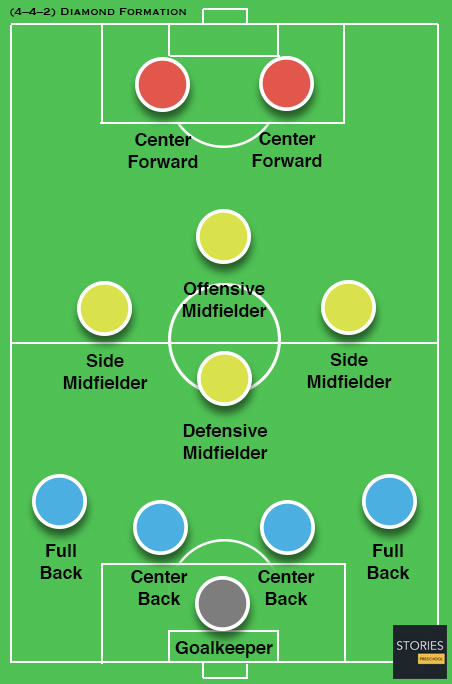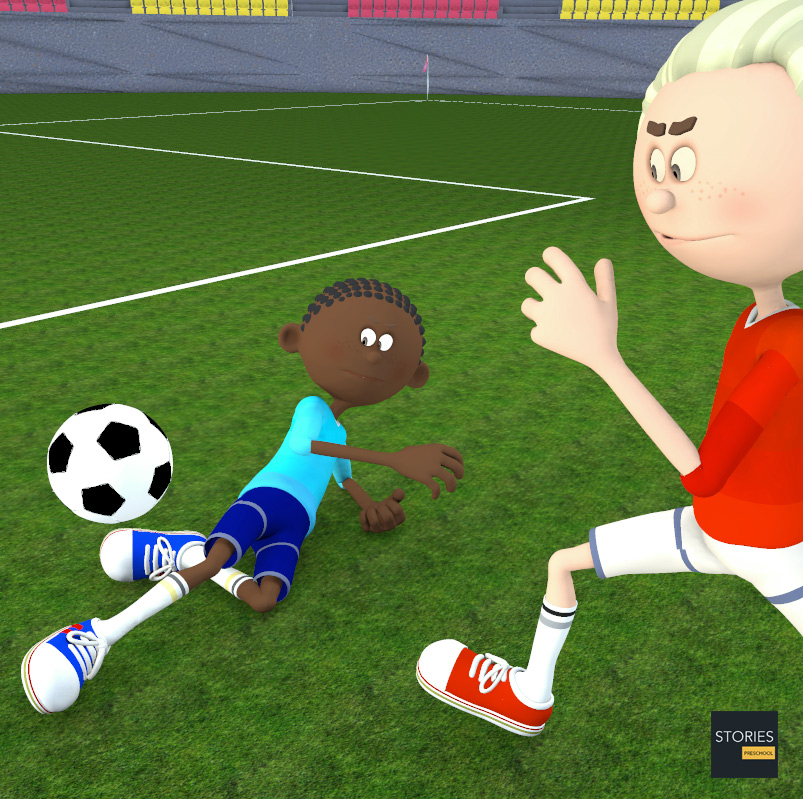Soccer

Full-Back
The full-backs take up the holding wide positions and traditionally stayed in defense at all times, until a set-piece. Modern full-backs take a more attacking role, overlapping with wingers down the flank. There is one full-back on each side of the field except in defenses with fewer than four players, where there may be no full-backs and instead only centre-backs.

In the modern game, full-backs have taken on a more attacking role than is the case traditionally. Wingerless formations, such as the diamond 4–4–2 formation, demand the full-back to cover considerable ground up and down the flank. Some of the responsibilities of modern full-backs include:
- Provide a physical obstruction to opposition attacking players by shepherding them towards an area where they exert less influence. They may maneuvre in a fashion that causes the opponent to cut in towards the centre-back or defensive midfielder with his weaker foot, where he is likely to be dispossessed. Otherwise, jockeying and smart positioning may simply pin back a winger in an area where he is less likely to exert influence.
- Making off-the-ball runs into spaces down the channels and supplying crosses into the opposing penalty box.
- Throw-ins are often assigned to full-backs.
- Marking wingers and other attacking players. Full-backs generally do not commit into challenges in their opponents' half. However, they aim to quickly dispossess attacking players who have already breached the defensive line with a sliding tackle from the side. Markers must however avoid keeping too tight on opponents or risk disrupting the defensive organization.
- Maintaining tactical discipline by ensuring other team-mates do not overrun the defensive line and inadvertently play an opponent onside.
- Providing a passing option down the flank; for instance, by creating opportunities for sequences like one-two passing moves.
- In wingerless formations, full-backs need to cover the roles of both wingers and full-backs, although defensive work may be shared with one of the central midfielders.
- Additionally, attacking full-backs help to pin both opposition full-backs and wingers deeper in their own half with aggressive attacking intent. Their presence in attack also forces the opposition to withdraw players from central midfield, which the team can seize to its advantage.

Due to the physical and technical demands of their playing position, successful full-backs need a wide range of attributes, which make them suited for adaptation to other roles on the pitch. Many of the game's utility players, who can play in multiple positions on the pitch, are natural full-backs. A rather prominent example is the Real Madrid full-back Sergio Ramos, who has played on the flanks as a full-back and in central defense throughout his career. In the modern game, full-backs often chip in a fair share of assists with their runs down the flank when the team is on a counter-attack. The more common attributes of full-backs, however, include:
- Pace and stamina to handle the demands of covering large distances up and down the flank.
- A healthy work rate and team responsibility.
- Marking and tackling abilities and a sense of anticipation.
- Good off-the-ball ability to create attacking opportunities for his team by running into empty channels.
- Dribbling ability. Many of the game's eminent attacking full-backs are excellent dribblers in their own right and occasionally deputize as attacking wingers.
- Player intelligence. As is common for defenders, full-backs need to decide during the flow of play whether to stick close to a winger or maintain a suitable distance. Full-backs that stay too close to attacking players are vulnerable to being pulled out of position and leaving a gap in the defense. A quick passing movement like a pair of one-two passes will leave the channel behind the defending full-back open. This vulnerability is a reason why wingers considered to be dangerous are double-marked by both the full-back and the winger. This allows the full-back to focus on holding his defensive line.
SPORTS

RESOURCES
This article uses material from the Wikipedia articles "Association football" and "Defender (association_football)", which is released under the Creative Commons Attribution-Share-Alike License 3.0.
© Stories Preschool. All Rights Reserved.












